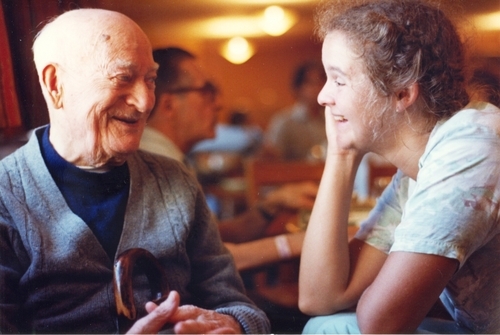Keddie, Morgan: my Air Force recollections (April 29, 1985)
An interview/narrative of Morgan Keddie's experiences during World War II. Group Captain Keddie served with the Royal Air Force. Interview took place on April 29, 1985.
Interviewee: Keddie, Morgan, b. 1904
Rank: Group Captain.
ABSTRACT: Group Capt. Morgan Keddie Royal Air Force Keddie_M_0087_01.mp3 (Side 1) Keddie was born in 1904 in Montreal, Que. He was educated in Ottawa, then Royal Military College which he left for health reasons after two years, Queen's University, and Massachusetts Institute of Technology where he obtained a Master's degree in aeronautical engineering. In the spring of 1932 he entered the Royal Air Force. Basic training in Uxbridge, Middlesex Flying Training School in Sealand, Ches. He describes some of the early training aircraft. Posted to No. 4 Squadron in Farnborough (20:00) and took Army Co-operation training in Old Sarum, Hants. Flew the Hawker Audax, a fine, late model biplane. The squadron shared Farnborough with the Royal Air Force Establishment where they tested all types of new military aircraft. He was promoted to flying officer and posted to India in 1933 to No. 20 Squadron in Peshawar on the North-West Frontier. After participating in operations against unruly tribesmen he became ill and was invalided home. While in India he lived in a cantonment, largely army, quite isolated from the civilian population. Comments on the early days of the Royal Indian Air Force. Air crew were Sikhs. The Westland Wapiti (bomber) was a most extraordinary machine, constructed of many spare parts of wartime machines. It was underpowered with one speed (eighty-five m.p.h.) for all flying. After he regained his health he was posted to R.A.F. Halton, Bucks. on a two-year engineer officers' course, which he found not too difficult due to his university training. (45:00) Keddie_M_0087_02.mp3 (Side 2) As a flight lieutenant he experienced his first court-martial as a defending officer. In 1937 he was posted to the Air Ministry as a technical staff officer. Great expansion was under way. Promoted to squadron leader. In 1940, appointed to an Advanced Flying Training School in Peterborough as a wing commander. Shortly thereafter the base personnel were moved to Kingston, Ont. under the Commonwealth Air Training Plan. Later he became Commanding Officer of the station. Major problems in maintaining the British aircraft were due to a shortage of spare parts. This problem disappeared after the aircraft were changed to North American Harvard trainers. In mid-1942 he became commanding officer of No. 6 Repair Depot, R.C.A.F. in Trenton, Ont. as a group captain. This was a command that needed and received rejuvenation. In Sept. 1943 he returned to England to administer a large number of aircraft preparation sites for aircraft (in preparation for D-Day). All types of aircraft were tested and armed before delivery to a squadron. Twenty-seven stations were under command of headquarters 41 Group at Andover where he was chief technical officer. Personnel were almost entirely civilian. (30:00) In mid-1944 he moved to the Ministry of Aircraft Production. After three months he was sent to Canada where he was technical adviser for production of the de Havilland Mosquito and the Avro Lancaster. He remained for the post-war wind-up of production and then joined Canadair in Montreal. After resigning from the R.A.F. he continued in civilian employment. (44:00)
Interviewer: Gray, Grant
- In Collection:
- 2 sound recordings (MP3)
- 52.16045, -0.70312
- 45.50884, -73.58781
- One original sound tape reel (ca. 90 min.) : 3 3/4 ips, 2 track, mono. ; 1 sound cassette copy : standard, mono. in Special Collections.
- Canadian Military Oral History Collection
- KM_087
- Special Collections Finding Aid: https://search.archives.uvic.ca/reginald-herbert-roy-fonds
- June 12, 2007
- Digital sound recording in .wav format at 16 bits and 22 kHz. In .mp3 format at 64 kbps and 22 kHz. Digitized by AN, technical and cataloguing metadata provided by JF and JP. Transferred from audio reel to audio cassette between 1987-1997. Interview migrated to digital format for UVic Special Collections in 2007. Migration metadata by KD and MT.
- Rights
- This interview has been posted with the understanding that it may be used for research purposes only. Should the interviewee or their heirs have any objections to this interview being accessible on the Internet, it will be removed promptly. Contact UVic Special Collections for permission if using for other than research purposes: speccoll@uvic.ca
- DOI
| Thumbnail | Title | Date Uploaded | Actions |
|---|---|---|---|
|
|
SC141_MilitaryOralHistory_GenericThumbnail |
|
|

|
Keddie_M_0087_01.mp3 |
|
|

|
Keddie_M_0087_02.mp3 |
|